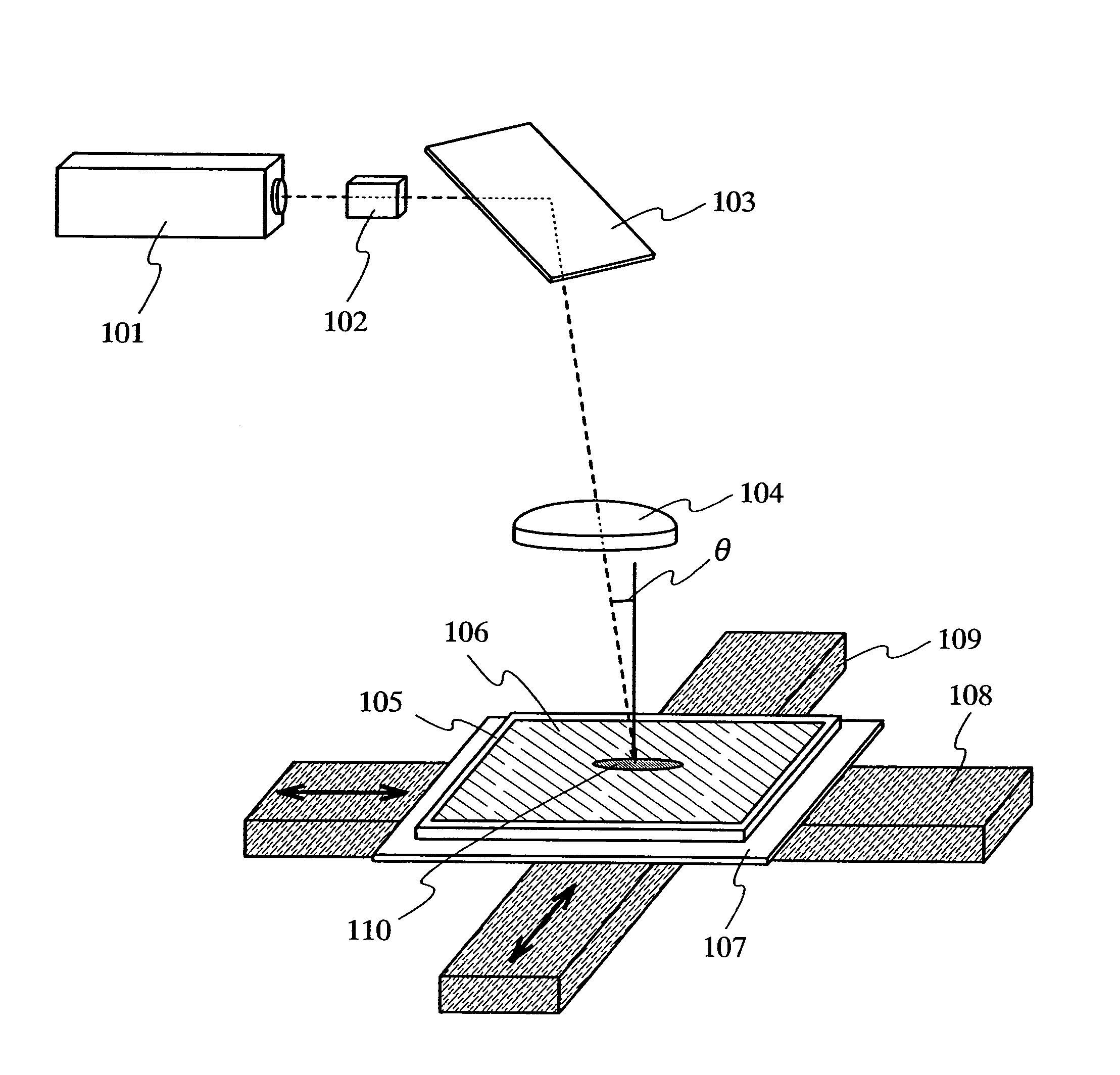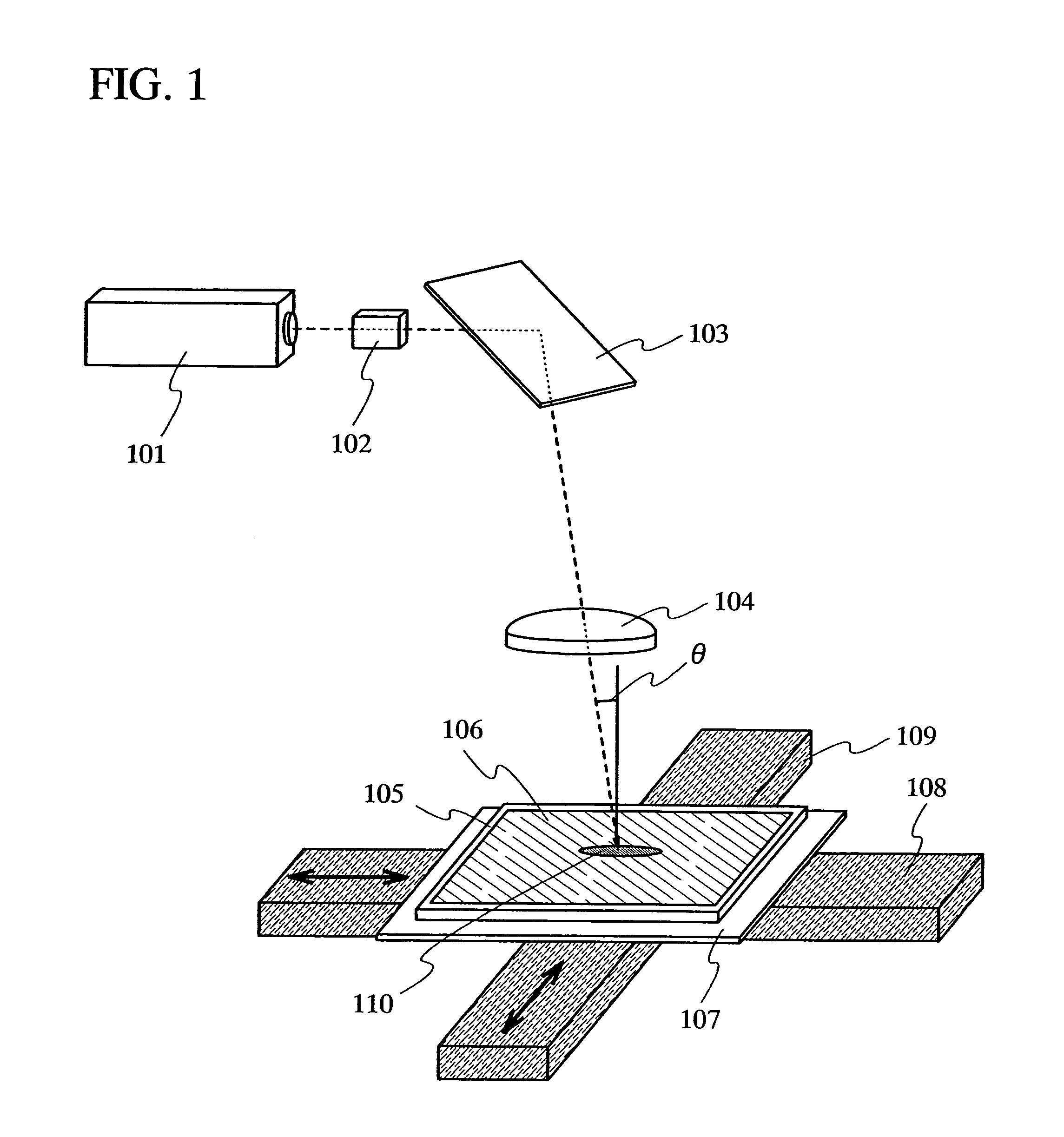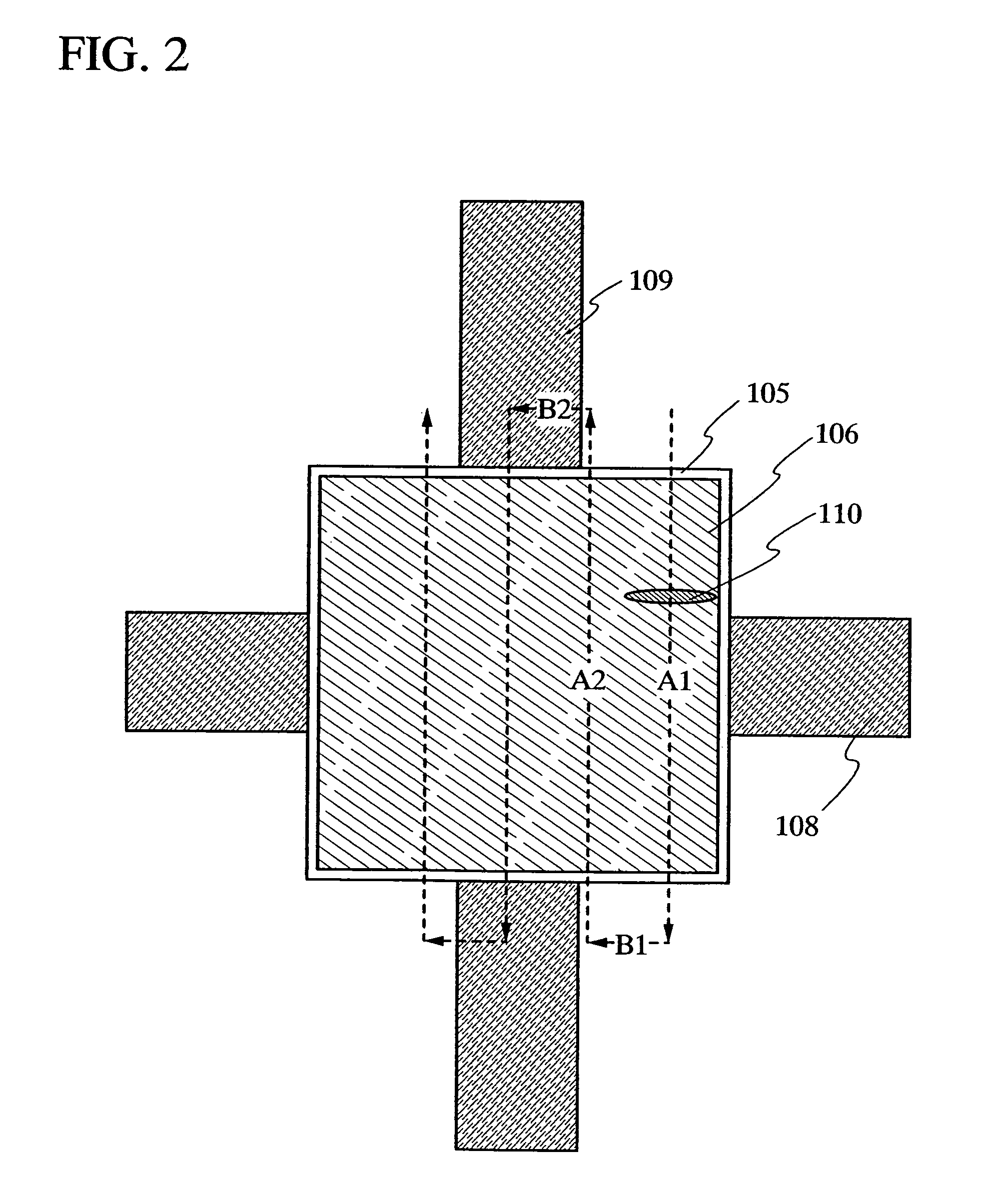Laser irradiation apparatus, laser irradiation method and method for manufacturing semiconductor device
a laser irradiation and laser irradiation technology, applied in laser beam welding apparatus, lasers, manufacturing tools, etc., can solve the problems of low conversion efficiency into harmonic using non-linear optical elements, low density of photon to time, and much lower resistance of non-linear optical elements to laser light, etc., to achieve the effect of reducing the proportion of the region, reducing the size of the beam spot, and increasing throughpu
- Summary
- Abstract
- Description
- Claims
- Application Information
AI Technical Summary
Benefits of technology
Problems solved by technology
Method used
Image
Examples
embodiment 1
[0059]This embodiment explains an optical system in the laser irradiation apparatus of the present invention with reference to FIGS. 4A and 4B.
[0060]The optical system shown in FIG. 4A has two cylindrical lenses 701 and 702. The beam spot of the laser light incident from the direction indicated by an arrow is shaped by the cylindrical lenses 701 and 702 and then it is irradiated to a processing object 703. It is noted that the cylindrical lens 702 closer to the processing object 703 has a shorter focal length than the cylindrical lens 701.
[0061]When the laser having a pulse width of approximately 10 ps is used according to the present invention, the optical system can be set without considering the effect of the interference. In other words, the laser light may be made incident into the processing object 703 vertically.
[0062]FIG. 4B shows an optical system for combining four beam spots into one beam spot. The optical system shown in FIG. 4B has six cylindrical lenses 717 to 722. The...
embodiment 2
[0068]This embodiment explains a laser irradiation method and a method for manufacturing a semiconductor device of the present invention with reference to FIGS. 5A to 5C.
[0069]Initially, a base film 501 is formed on a substrate 500 as shown in FIG. 5A. A glass substrate such as a barium borosilicate glass or an alumino borosilicate glass, a quartz substrate, a stainless substrate, or the like can be used as the substrate 500 for example. In addition, although a substrate made of flexible synthetic resin such as acrylic or plastic typified by PET, PES, or PEN tends to be inferior to the above substrates in point of the resistance against the heat, the substrate made of flexible synthetic resin can be used when it can resist the heat generated in the manufacturing process.
[0070]The base film 501 is provided in order to prevent the alkali-earth metal or alkali metal such as Na included in the substrate 500 from diffusing into the semiconductor film. The alkali-earth metal or the alkali...
embodiment 3
[0084]Unlike the embodiment 2, this embodiment explains an example in which the crystallization method by the laser irradiation apparatus of the present invention is combined with the crystallization method by the catalyst element.
[0085]Initially, the process up to forming the semiconductor film 502 is performed with reference to FIG. 5A of the embodiment 2. Next, as shown in FIG. 6A, a nickel acetate solution including Ni in the range of 1 to 100 ppm in weight is applied to the surface of the semiconductor film 502 by a spin coating method. It is noted that the catalyst may be added not only by the above method but also by another method such as a sputtering method, a vapor deposition method, or a plasma process. Next, the heat treatment is performed for 4 to 24 hours at temperatures ranging from 500 to 650° C., for example for 14 hours at a temperature of 570° C. This heat treatment forms a semiconductor film 520 in which the crystallization is promoted in the vertical direction f...
PUM
| Property | Measurement | Unit |
|---|---|---|
| speed | aaaaa | aaaaa |
| scanning speed | aaaaa | aaaaa |
| length | aaaaa | aaaaa |
Abstract
Description
Claims
Application Information
 Login to View More
Login to View More - R&D
- Intellectual Property
- Life Sciences
- Materials
- Tech Scout
- Unparalleled Data Quality
- Higher Quality Content
- 60% Fewer Hallucinations
Browse by: Latest US Patents, China's latest patents, Technical Efficacy Thesaurus, Application Domain, Technology Topic, Popular Technical Reports.
© 2025 PatSnap. All rights reserved.Legal|Privacy policy|Modern Slavery Act Transparency Statement|Sitemap|About US| Contact US: help@patsnap.com



